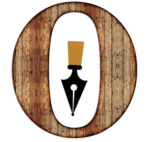‘Show, don’t tell’ isn’t just a phrase to embellish your writing. It’s a way for readers to connect with your characters and the story. It’s a way for the readers to be around them and in the midst of the story. It’s a way for the readers to live the story your characters are living and you lived as the author of it.
Now, we often find ourselves in the dilemma of how to show more and tell less, or at least maintain a balance between the two. Each writer writes to improve and weave the stories for the world to get lost into and come out as if it lived them.
Sensory Imagery in Literature
Well, this is done through ‘Sensory Imagery’. Sensory imagery works by engaging a reader’s five senses (sight, smell, sound, taste, and feeling) with concrete details that allows them to create vivid imagery of what is happening.

Through a combination of sensory imageries, authors arm the readers with information that gives them the pleasure of arriving at their own judgements through perceptual clues.
If you’re one of them, bookmark this article that has over 300+ Show Don’t Tell Examples. These sentences are completely at your disposal. You can use them in your writing as they are. (Just put us in attributions, it’ll make us happy).
Before I begin, understand that there are 7 different types of imagery in literature:
Types of Imagery in Literature

- Visual
- Auditory
- Olfactory
- Gustatory
- Tactile
- Kinesthetic
- Organic
Kinesthetic Imagery in Literature
Kinesthesia is used as a poetic device that gives a feeling of natural, or physical bodily movement or action (like breathing, heartbeat, and a pulse).

Kinesthetic imagery is the representation of the actions and movements of an object or a character. William Shakespeare used anesthesia in his works:
Measure for Measure, by William Shakespeare
“This sensible warm motion to become
A kneaded clod; and the delighted spirit
To bathe in fiery floods, or to reside
In thrilling region of thick-ribbed ice…”
(Measure for Measure, by William Shakespeare)
Above, Shakespeare presents the phrases “warm motion,” and “clod” as kinesthetic imagery.
Kinesthetic Imagery Literary Examples
It is mostly used as a poetic literary device. And the writers incorporate Kinesthetic imagery to show movement, motion or action in their writing.
- Beating of heart
- Breathing
- Being on cloud nine
- Walking on the lone path
- Slithering in the alley
- Loitering and wandering
- Swaying to the tunes of the song
- Flipping the pages
- flickering and twinkling lights
- Blinking away the sleep
- Batting her eyelashes
- Dragging oneself ahead
- Flapping the wings
- Rummaging through the drawers
- Toppling over the heap of clothes
- Hurling abuses at him
- Slinging the rope on his shoulder
- Riding the horse
- Tossing away the pillow
- Throwing the ball/ stone in the river
- Water gurgling on the shore
- Water lapping in the sea
- Drizzling
- Dribbling
- Jerking her head in his direction
- Running his hand through his hair
- Trailing her fingers on the sodden pages of the book
- Galloping horses
- Startling events
- Fear creeping up
- Raising a brow
- Creasing forehead/ sheets
- Pursed lips
- Nibbling/ Chewing/ Nipping/ Nicking
- Clenched/ Tightened Jaw
- Wrinkled/ Crinkled nose
- Faking a smile
- Twisted truth/ lips/ mouth
- Spirits lifted
- Glittering sky
- Eyes sparkling/ gleaming/ glistening
- Fidgeting fingers
- Fiddling with the bracelet
- Rubbing palms together
- Clenching fists
- Raking hands through the hair
- Stroking the chin
- Scratching the beard
- Shrugging
- Throwing hands in the air
- Jutting out the lip
- Ducking beneath the table
- Spurted clouds of steam
- Water gushing down the river
- Unquenched thirst
- Twinkling stars
- Retreating steps
- Nearing home
- Wounding heart with a smile
I understand there is also a thing called ‘too much showing’. And to maintain a balance between too much showing and too much telling, we, the writers, need to know the scenes where showing is required and how much we should show. The above-given examples are completely at your disposal. Do make their use and your writing impressive!
Now that you have a thorough understanding of literary elements to use in your own writing, it’s time to put your skills to use! The only way to do this is to practice and actually sit down to write.
Before you leave, check out these 15+ examples on Visual imagery to empower your ‘Show don’t tell game.’

Pingback: Master Organic Imagery with 100+ Literary Examples